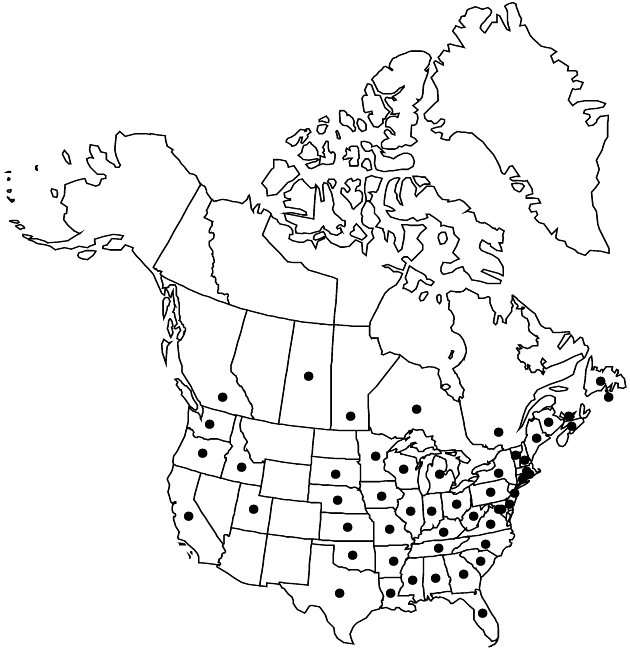Erigeron annuus
Syn. Pl. 2: 431. 1807.
Annuals, (10–)60–150 cm; fibrous-rooted or taprooted. Stems erect, sparsely piloso-hispid (hairs spreading), sometimes strigose distally, eglandular. Leaves basal (usually withering by flowering) and cauline; basal blades mostly lanceolate to oblanceolate or ovate, 15–80 × 3–20 mm, margins coarsely serrate to nearly entire, faces sparsely strigoso-hirsute, eglandular; cauline lanceolate to oblong, little reduced proximal to midstem. Heads ca. 5–50+ in loosely paniculiform or corymbiform arrays. Involucres 3–5 × 6–12 mm. Phyllaries in 2–3(–4) series, sparsely villous or hirsuto-villous, minutely glandular. Ray florets 80–125; corollas white, 4–10 mm, laminae tardily coiling. Disc corollas 2–2.8 mm. Cypselae 0.8–1 mm, 2-nerved, faces sparsely strigose; pappi: outer minute crowns of setae or narrow scales, inner 0 (rays) or of 8–11 bristles (disc). 2n = 27.
Phenology: Flowering Jun–Aug(–Nov).
Habitat: Mostly open, disturbed habitats, especially roadsides, fields, waste areas
Elevation: 0–500(–2200) m
Distribution

St. Pierre and Miquelon, B.C., Man., N.B., Nfld. and Labr. (Nfld.), N.S., Ont., P.E.I., Que., Sask., Ala., Ark., Calif., Conn., Del., D.C., Fla., Ga., Idaho, Ill., Ind., Iowa, Kans., Ky., La., Maine, Md., Mass., Mich., Minn., Miss., Mo., Nebr., N.H., N.J., N.Y., N.C., Ohio, Okla., Oreg., Pa., R.I., S.C., S.Dak., Tenn., Tex., Utah, Vt., Va., Wash., W.Va., Wis., Mexico (Hidalgo), Central America (Costa Rica, Nicaragua, Panama), Europe, Asia.
Discussion
Erigeron annuus is apparently native to eastern North America (United States and southern Canada) and is introduced elsewhere; it probably occurs in North Dakota and Alberta; apparently it has not been documented there. Apparent intermediates between E. annuus and E. strigosus are encountered.
Selected References
None.